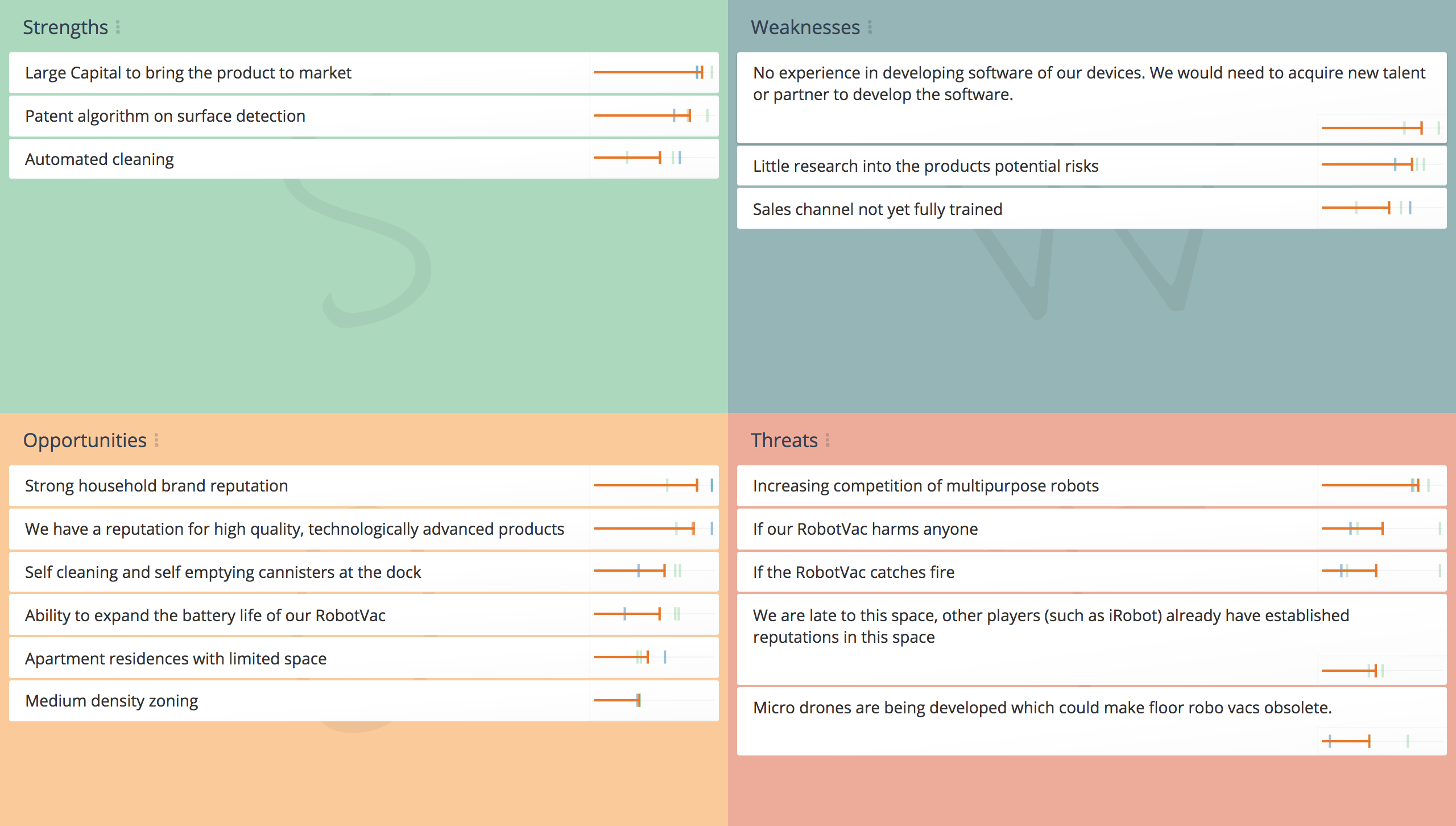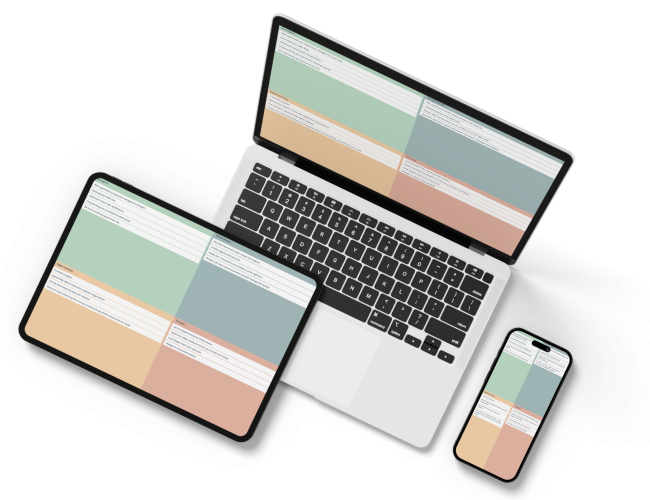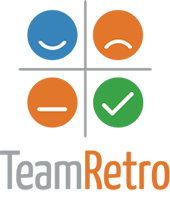
What is a SWOT Analysis?
SWOT analysis is a simple, but useful, planning tool for assessing internal and external factors impacting on your organization’s success, now and in the future. The SWOT methodology identifies internal strengths (S) and weaknesses (W) of the organization and external Opportunities (O) and Threats (T) in the marketplace.
The information identified during a SWOT session provides the basis for further in-depth analysis using other business tools, and should lead to a business strategy and action plan that capitalizes on strengths, rectifies weaknesses, takes advantage of opportunities, and minimizes threats.
Why Do a SWOT Analysis?
Using a SWOT analysis as a planning tool provides an opportunity to bring your whole team together, encourages their participation development of your business strategy, and promotes mutual understanding of critical issues impacting on your success. Developing a SWOT Matrix does not require specialized training and has minimal cost, except for the time of those involved. You can use it:
- As part of an annual strategy review
- To react and respond proactively to a changing environment
- To explore new initiatives
- To focus and redirect efforts and resources
- As part of emergency and crisis planning
- As a broad environmental scan for initial planning
- To plan an individual’s career or develop a performance plan.
Who Can Use a SWOT Analysis?
Because the technique is so simple and versatile, development of a SWOT chart is useful for:
- All industries
- Anyone who needs to make decisions and manage initiatives
- All levels of an organization
- Existing businesses
- New businesses
- Individuals
Related Templates
- Stakeholder analysis
- PESTLE analysis
- PEST analysis
- TOWS analysis
- Carefully select participants to provide expert knowledge but also a fresh perspective.
- Use technology to involve critical people in different locations rather than miss their contribution.
- Minimize Groupthink by brainstorming ideas individually then combining issues to get the overall picture.
- Be specific rather than broad when defining ideas.
- Use quantitative data where possible to focus on the crux of issue.
- Provide adequate time in the session to rank and prioritize ideas.
- Customize rating dimensions for your organization to ensure prioritized issues are those that matter most and have the greatest impact.
- Communicate outcomes to stakeholders and regularly update progress on actions.
- What is SWOT Analysis and how to apply it on your business – Foundenist.com
SWOT Analysis Template
Strengths
Strengths could include such things as:
- Your brand and reputation
- Patents and intellectual property
- Prime location
- Key employees
- Advanced technology or leading edge processes
List of example questions:
- What do we do better than anyone else?
- What unique resources can we draw upon that our competitors can’t?
- What do our customers see as our strengths and why do they choose us?
Opportunities
Opportunities might include:
- New markets
- New technology
- Changes in customer demographics and lifestyle choices
- Topical events
- Changes in government policy
List of example questions:
- What changes and trends in our external environment can we benefit from?
- Is the opportunity ongoing or is there a limited window to get involved?
- Is the market expanding or do other factors make it worth pursuing?
Weaknesses
Weaknesses might include:
- A lack of expertise, skills or funds
- Aging infrastructure and technology
- An inflexible workforce.
A list of example questions e.g.
- What are your competitors doing better than you?
- What makes potential customers buy from others?
- What factors lose you sales?
Threats
Threats might include:
- New regulations
- New competitors
- Political change
- Environmental conditions
- The state of the economy
List of example questions:
- What moves are our competitors making that impact on our business?
- What changes will negatively affect revenue and profits?
- What threats do our suppliers face that will impact on us?
Internal factors – strengths & weaknesses
Internal Strengths and Weaknesses are in the NOW. They are things that the organization or individual can change with the application of time, effort, and resources. Tip: While strengths and weaknesses are about the business or project it’s important to consider what your customers and other external stakeholders think in addition to the in-house team.
External factors – opportunities & threats
How to Run a SWOT Analysis Session

Objectives
Define a clear, one sentence objective for the SWOT Analysis.

Brainstorm
Gather input and ideas. Start with internal factors – Strengths, Weaknesses; then External Factors – Opportunities and Threats.

Collate
Collate ideas – clarify content, group similar ideas, and delete duplicates.

Prioritize
Rate and prioritize issues according to impact on the organisation.

Action Planning
Create an action plan and assign responsibility for each issue to a group or individual for action.

Share and Communicate
Share and communicate the outcomes of the session, including the action plan to relevant stakeholders.
All SWOT exercises should begin by stating the objective of the session and ensuring all participants are clear on the scope so they can focus their efforts. Define the objective before the actual workshop to save time.
The objective should define whether the SWOT analysis is focused at the strategic, tactical, project, product/service, or personal level and have a clear timeframe. Are participants focussed on the next month, year, or a multi-year period?
Each SWOT analysis is unique to an objective. If the business objective, project or product changes, then the SWOT should be reviewed and updated.
Example SWOT objectives:
- Define Strategic Priorities for the next five years.
- Establish a presence in Asian markets within a year
- Implement a new CRM system across the organization in next financial year.
Different methods for gathering input and ideas from participants include a whiteboard, post-it notes, or on dedicated software like GroupMap. (Note: The latter makes Steps 3 to 6 far easier and less resource intensive.)
The results from analysis using these complementary tools are useful at this point. To save time, perform these activities prior to the Workshop: PEST/PESTEL, Stakeholder Analysis, Business Model Canvas, Porter’s Five-Forces.
Once you have everybody’s ideas they need to be organized. Spend time culling duplicates, merging similar ideas, and discarding those not in scope.
This step is more time consuming if the brainstorming was performed individually – or completed at different times and locations. Using a software tool like GroupMap to group ideas can significantly reduce the time and effort required in this step – and result in a better outcome.
Narrow the final SWOT Analysis to the most critical three to five factors in each quadrant. These are the issues you should address in your SWOT Action Plan.
Hint: This step is easier if you identify the top 3 – 5 dimensions you want to rate each item against. For example:
- Strategic Objective – How much impact this item has on the objective
- Revenue – Potential impact on revenue
- Timeframes – immediate, mid/long term
Participants can rank items independently and then combine their rankings, or this step can be done as a group. Where there are large disparities in individual ratings, get participants to explain their logic.
Combining individual rankings into an overall score is much easier and faster if you use an online tool like GroupMap, especially if you have more than one criteria.
For each priority issue, there should be one or more actions. Assign responsibility and a timeframe for completion to a group or individual. Consequently, the time and effort to complete the SWOT analysis are rewarded with progress and improvement over time.
Sharing and communicating the outcomes of the SWOT analysis and subsequent action plan are essential to getting buy in from participants and other stakeholders. It’s important that things change because of the effort and time spent in the session or people are unlikely to want to participate in future initiatives.
The final report from the SWOT analysis and associated action plan enables:
- Communication to relevant stakeholders
- Further analysis using other business tools – E.g Business Model Canvas,
- Monitoring the progress of actions
- A foundation for future reviews.
GroupMap automatically generates visually appealing reports in several formats for distribution, saving time and effort after the workshop.

Save Effort, Time and Money with GroupMap
GroupMap offers more than just an online digital whiteboard—it’s innovative platform is designed to enhance the quality of your team’s decisions. With features that prevent bias and make facilitation seamless, GroupMap ensures no single voice dominates and ensures productive, inclusive conversations.
Its intuitive interface is easy for anyone to use, and its scalable design supports small teams and large groups whether they are face to face or around the globe. Customisable templates and workflows keep discussions focused on objectives, helping you drive actionable outcomes each and every time.
Create your first map and invite people in to start sharing their thoughts NOW.
Experience the power of GroupMap with our FREE 14 day trial.
Your free trial gives you access to all of our features, no credit card required.
